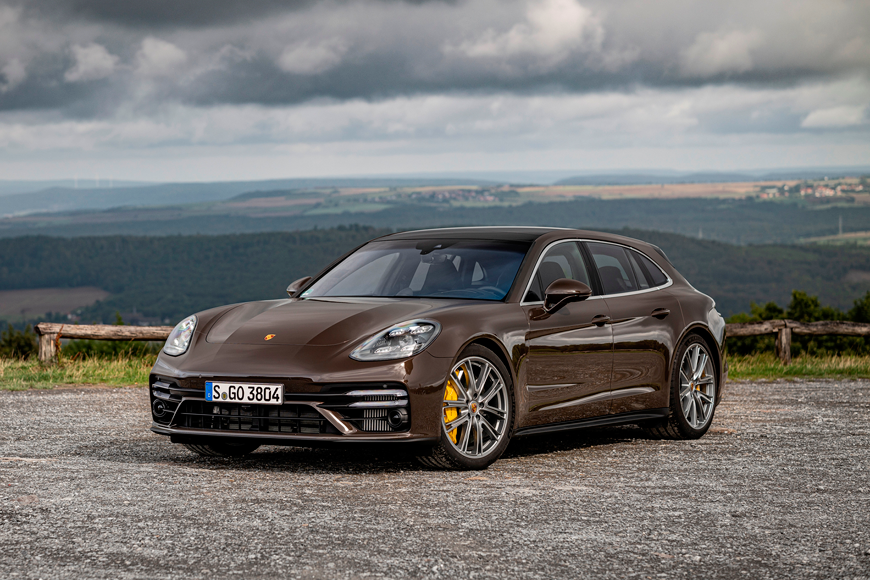A niche automotive sub-genre beloved by many diehard petrolheads and auto enthusiasts over high, heavy and lumbering crossovers and SUVs, the high performance estate combines the dynamic prowess and performance potential of a more traditional super saloon, with the added practicality of a wagon body saloon.
The ultimate “dad racer” segment, it could be argued that the very first bona fide super estate was the 1994 Audi RS2 Avant, which was developed in collaboration with Porsche.
Audi RS6 Avant
Championing the performance estate since it mated the iconic “Ur” Quattro’s turbocharged 5-cylinder engine and four-wheel-drive to the 1980s 200 Avant executive wagon, Audi’s next gambit was the 1994 RS2 Avant, which was its first “RS” model. A regular feature of Audi’s high performance skunkworks division, the latest RS6 Avant incarnation might be slightly out-muscled or out-sized by some competitors, but arguably remains the best-rounded “gold standard” by which super estates are measured.
Powered by a twin-turbocharged 4-litre V8 engine slung just ahead of its front axle and driving all four wheels through Audi’s sublime Quattro system, the RS6 develops enormous levels of traction and roadholding. The ultimate wet weather family-friendly supercar, the modern RS6’s and its Quattro system operate with a slight rear bias — and uses four-wheel-steering — for improved agility, and features centre Torsen and optional rear limited-slip differentials to allocate power where needed for performance and safety.
Producing 591BHP at 6,000-6,250rpm and 590lb/ft torque throughout an easily accessible 2,050-4,500rpm range the RS6 Avant rockets from standstill to 100km/h in just 3.6-seconds, and onto a de-restricted 305km/h. As dramatic in design as in performance, it sits with a wide-hipped potent posture and features blistered wheel-arches, hungry gaping grille, squinting headlights and deep intakes. Well-appointed and equipped, the practical RS6 accommodates 565-litres of luggage, which expands to 1,680-litres.
Specifications
Engine: 4-litre, twin-turbocharged V8-cylinders
Gearbox: 8-speed automatic, four-wheel-drive, Torsen locking differential
Power, BHP (PS) [kW]: 591 (600) [441] @6,000-6,250rpm
Torque, lb/ft (Nm): 590 (800) @2,050-4,500rpm
0-100km/h: 3.6-seconds
Top speed: 305km/h (unrestricted)
Length: 4,995mm
Width: 1,951mm
Height: 1,460mm
Wheelbase: 2,929mm
Kerb weight: 2,175kg
Luggage volume, min/max: 565-/1,680-litres
Suspension: 5-link, adaptive air suspension
Steering: Four-wheel steering
Tyres: 275/35R21
Mercedes-AMG E63 S 4Matic+ Estate

Second perhaps, only to Audi in dedication to the super estate, even as its SUV line swells in size, Mercedes-Benz may have retired the sporty low-roof CLS-Class Shooting Brake estate, but still currently fields performance wagons in two segments. Largest and most powerful of these, the Mercedes-AMG E63 S 4Matic+ Estate dispenses with sporty “lifestyle” pretences and rakish rooflines, but instead whole-heartedly embraces the traditional wagon body style.
Elegantly conservative with its rearwards orientation and long, upright boot, the E63 Estate is the most voluminously practical in its class and generously accommodates 640-litres of luggage, which expands to a cavernous 1,820-litres, when rear seats are folded. Mounted behind its dramatically broad, vertically-slatted grille, the E63 S 4Matic+ Estate is powered by a brutally capable twin-turbocharged 4-litre V8 engine belting out 603BHP at 5,750rpm and 627lb/ft throughout a broad 2,500-4,500rpm band.
Boasting brisk 3.5-second 0-100km/h acceleration and an electronically governed 290km/h top speed, the E63’s rear-biased four-wheel-drive system meanwhile lends a balanced rear-drive dynamic character. Driven through a 9-speed automatic gearbox, the E63’s four-wheel-drive meanwhile sends power to the front and varies distribution along the rear axle with a limited-slip differential, to effectively put power down to tarmac courtesy of huge, staggered low profile 265/35R20 front and 295/30R20 rear tyres.
Specifications
Engine: 4-litre, twin-turbocharged V8-cylinders
Gearbox: 9-speed automatic, four-wheel-drive, locking rear differential
Power, BHP (PS) [kW]: 603 (512) [450] @5,750-6,500rpm
Torque, lb/ft (Nm): 627 (850) @2,500-4,500rpm
0-100km/h: 3.5-seconds
Top speed: 290km/h (electronically governed)
Length: 4,996mm
Width: 1,907mm
Height: 1,474mm
Wheelbase: 2,939mm
Kerb weight: 2,075kg
Luggage volume, min/max: 640-/1,820-litres (estimate)
Suspension, F/R: Multilink, adaptive air suspension
Tyres, F/R: 265/35R20/295/30R20
Porsche Panamera Turbo S Sport Turismo

Initially trading more on performance and prestige than space or style, the Porsche Panamera has had its fair share of eager enthusiasts and critics since its 2009 launch. Not the prettiest of Porsches, but no ugly duckling, in its first iteration, the addition of a super estate variant to the second generation Panamera line-up, circa 2016, has, however, been transformative in its newfound appeal among many former detractors.
Well-reconciling the Panamera’s low, wide and long body and rounded design by lending it greater visual bulk, an elegantly sporty rearwards emphasis, and adding greater practicality, the Panamera Turbo S Sport Turismo might not quite match Audi and Mercedes super wagons in space, but it makes up for it with phenomenal performance courtesy of its muscular twin-turbocharged 4-litre V8 engine and sure-footed four-wheel-drive and traction management system.
Supercar swift with 621BHP at 6,000rpm and abundantly versatile 604lb/ft torque throughout a wide 2,300-4,500rpm band, the Panamera Turbo S Sport Turismo swiftly dashes through 0-100km/h in just 3.1-seconds and tops out at 315km/h. With adaptive double wishbone front and multilink rear suspension managing its 2.2-tonne heft through corners, the Turbo S Sport Turismo’s four-wheel-steering meanwhile serves to enhance stability and agility, despite its considerable 5,049mm length.
Specifications
Engine: 4-litre, twin-turbocharged V8-cylinders
Gearbox: 9-speed automatic, four-wheel-drive
Power, BHP (PS) [kW]: 621 (630) [463] @6,000rpm
Torque, lb/ft (Nm): 604 (820) @2,300-4,500rpm
0-100km/h: 3.1-seconds (with Chrono Package)
Top speed: 315km/h
Length: 5,049mm
Width: 1,937mm
Height: 1,432mm
Wheelbase: 2,950mm
Kerb weight: 2,210kg
Luggage volume, min/max: 487-/1,356-litres
Suspension, F/R: Double wishbones/multilink, adaptive air suspension
Steering: Four-wheel steering
Tyres, F/R: 275/35R21/
325/30R21